by Betty Samson
They come in droves, a sea of humanity streaming along the streets like water from a gushing river, walking and plodding determinedly to reach a domed cathedral at the top of a hill in upland Antipolo, Rizal province. Years ago this crowd of long-distance trekkers reached a record five million.
This is the phenomenal Alay Lakad of Catholic devotees in the Philippines.
This “Walk Offering” more popularly called Alay Lakad starts on the afternoon of Maundy Thursday every year of Holy Week. All throughout my growing up years I’ve heard of this but have never joined it. I was young then, preferred social activities with friends than all that religious fervor on the streets.
Last year I saw these trekkers up close. I had moved up to Antipolo City already. That was my first Holy Week in this pilgrimage capital of the Philippines. Coming home after a lunch with cousins I turned into Ortigas Extension one late afternoon and saw them streaming along the sidewalks moving toward one direction. Mostly young people headed toward the hills of Antipolo. My companion and I marveled and pointed to occasional sights: a kid riding in a stroller pushed by the parents, participants in flat rubber slippers, snall bands of bikers on foot, a thirsty crowd around a coconut juice stand, stations of the cross with loudspeaker blaring out prayers, water and snack stands practically every 3 meters along the way, first aid stations, police assistance centers, resting tents, portable bathrooms, etc.
As I turned into the new neighborhood where I now lived police marshals remarked it was good I had arrived already. In 30 minutes or so they were going to close the entire road to vehicles. The Alay Lakad participants will have the entire boulevard to themselves all the way to the Antipolo church.
Were they that many?
Old timers suggested I should see the Alay Lakad in the evening when the numbers of these trekkers increase. By 9pm that night I went out to the boulevard where they had been walking since their arrival to town. The crowds had gotten thicker. The zigzag road leading up to Antipolo from Ortigas Extension was closed to traffic and the whole road was packed with people.
All roads leading to the Antipolo church are filled with Alay Lakad trekkers. The approach from the Ortigas Extension gave the best experience. The entire stretch from the Tikling rotunda down in Cainta all the way up to the Antipolo church becomes one solid mass of humanity.
One water vendor nearby remarked we should stay and watch the crowd till midnight. It becomes so thick, he remarked, you cannot drop a pin on the street (di mo mahulugan ng karayom).
Devotees of this practice pass the tradition down to their children who, in turn, continue the pilgrimage when they become of age. Upon arriving at the cathedral, though there’s no Mass and the doors close by midnight, they linger and fill the plaza to rest and wait until the dawn Mass of the following day. Others proceed to the age-old Hinulugang Taktak national park to pass the night. It’s the only time of the year, a park attendant told me, where the park is open 24 hours because of the Alay Lakad.
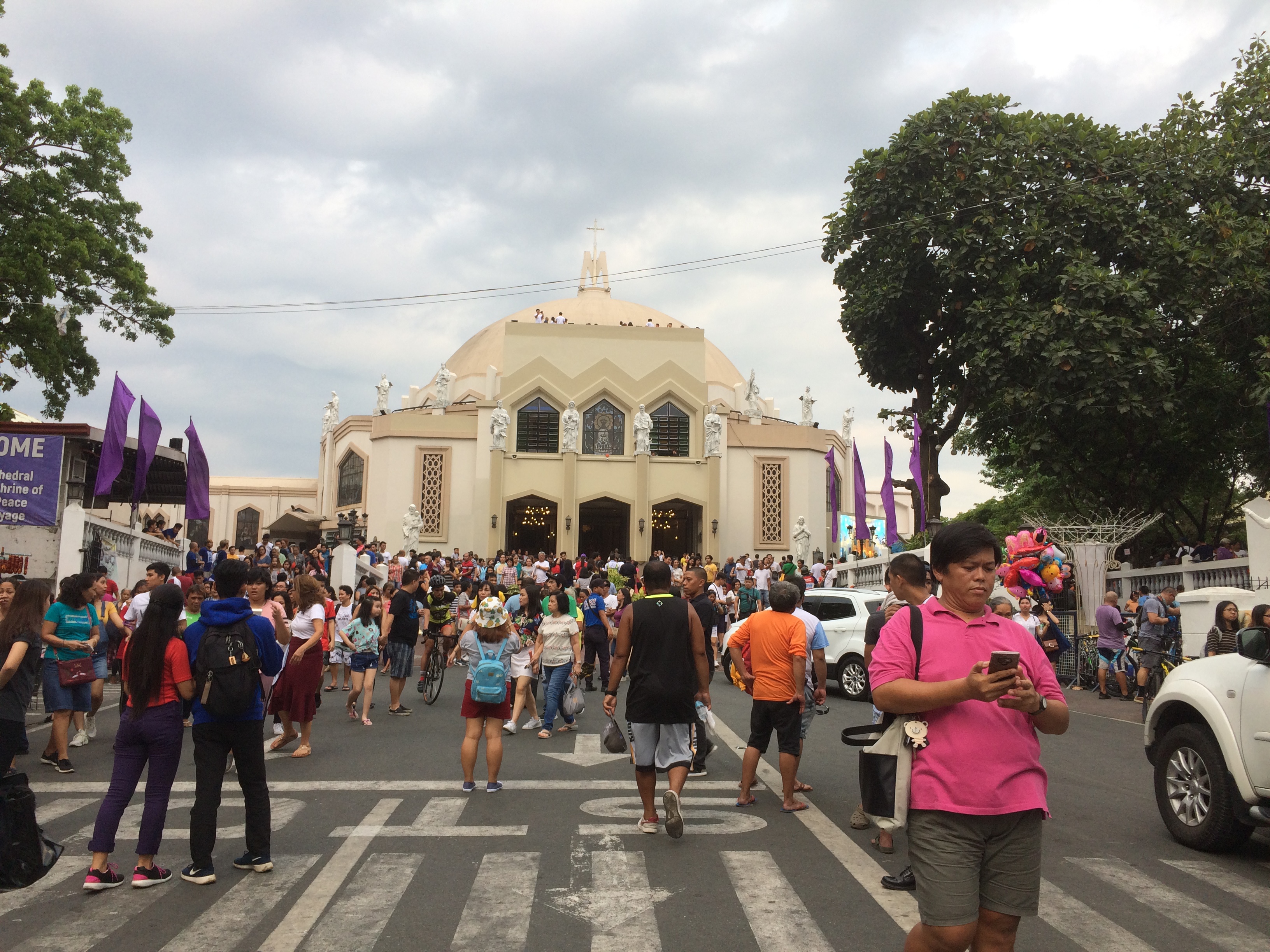






Object of veneration in the Antipolo church is a small image of the Blessed Virgin which was carved out of a dark hardwood in Acapulco, Mexico in the 1600s. When Don Juan Nino de Tavora was assigned to serve as Governor-General to the Philippines, then a colony of Spain, he was faced with the dilemma of how he could make it safely across the vast Pacific Ocean. Voyages across the ocean in those days was extremely dangerous. Ships faced storms, shipwrecks, piracy, and other dangers including fire, epidemic or mutiny onboard. Being a devotee of the Blessed Virgin Tavora had a small image of her made to accompany him on his travel to his new assignment. The small image arrived with Tavora on Philippine shores safely in 1626 after a 4-month travel surviving a series of typhoons and a fire onboard.
Upon the death of Tavora in 1632 the image was bequeathed to the Jesuits. The Jesuits were evangelizing in the forested hills east of Manila. When Fr. Pedro Chirino, historian, was appointed parish priest of Antipolo, he brought along the litle brown image. Never did Tavora imagine that his little brown Marian image would go on to carve out a long history that survived wars, invasions, 10 crossings of the Pacific Ocean, even an epidemic. The image quickly became a favorite world traveller. Ship captains and crew would borrow her before journeying across the Pacific during those two and a half centuries of the Galleon Trade. The Virgin of Antipolo crossed the Pacific on five galleon ships from Acapulco, Mexico from 1641-1746. Each ship arrived on Philippine shores then journeyed back to Mexico (and vice versa) with both goods and passengers aboard safely each time.
In one journey in 1653 in a galleon ship the San Diego, Sabiniano de Lara was onboard to assume his post in Manila as Governor-General. The ship survived 3 Pacific typhoons. De Lara conferred by public decree on Our Lady of Antipolo the formal title of Nuestra Senyora de la Paz y Buen Viaje (Our Lady of Peace and Good Voyage) when he arrived safely on Philippine shores.
In 1746 then Governor-General Most Rev. Juan de Arrechedera, also Bishop of Nueva Segovia, borrowed the image to cross the Pacific and return to Mexico. This was during a period of constant attacks from Dutch and English pirates aware that these galleon ship were rich with their cargo. The governor-general placed his cane, symbol of his authority, in the hands of the Nuestra Senyora as symbol of surrendering his governance in the hands of the Virgin. This act was immortalized for as as you look closely at her image, the little brown Virgin carries, not a scepter but a field marshall’s baton. The ship, the Nuestra Senyora del Pilar, returned back to Acapulco with the governor safely in 1748.
The image was canonically crowned in 1926 by then Archbishop of Manila, Most Rev. Michael O’Doherty. Antipolo church, home to the Nuestra Senyora became a national shrine in 1954, later a cathedral in 1983.
The Alay Lakad began as a commemoration of the Virgin’s return to Antipolo from the Quiapo church in Manila in 1954. During the Japanese occupation of the Philippines in 1940 the invaders made Antipolo a garrison. In 1944 during the Liberation with the arrival of Gen. Douglas MacArthur and his troops Japanese forces retreated to the hills. Devotees fled with the Virgin in a perilous escape though the back forests in the midst of the bombing and burning of the town. This wilderness trail led down to the banks of a tributary where the image was loaded into a canoe (banca) accompanied by the devotees and sailed under cover during the night. The stream joined the Pasig River and led them to Manila. The VIrgin was unloaded at a secluded riverbank and kept in a private residence for a month. She was transferred to the Quiapo church (beside the famous Black Nazarene) until the end of the Second World War. The Nuestra Senyora was carried back to her home in Antipolo on October 15, 1954 by devotees on foot. This was the first Alay Lakad which has since been observed every Maundy Thursday as a commemoration.
A trek beginning at the Quiapo church in Manila is a good 24 kilometers away, to be taken leisurely even if it takes all night with several stopovers at snack booths and drinking stalls dotting the sidewalks. Not everybody starts the walk from the Quiapo church, of course. Devotees flock from all over the Philippines to join in this commemoration and they can start from anywhere they like. Groups who arrive in buses and jeeps alight at an agreed point then walk the rest of the distance. The young will start from wherever their fervor inspires them.
Today the trek is done for a variety of reasons from gratitude for a favor bestowed, love for the Virgin, special requests, penance, and others.
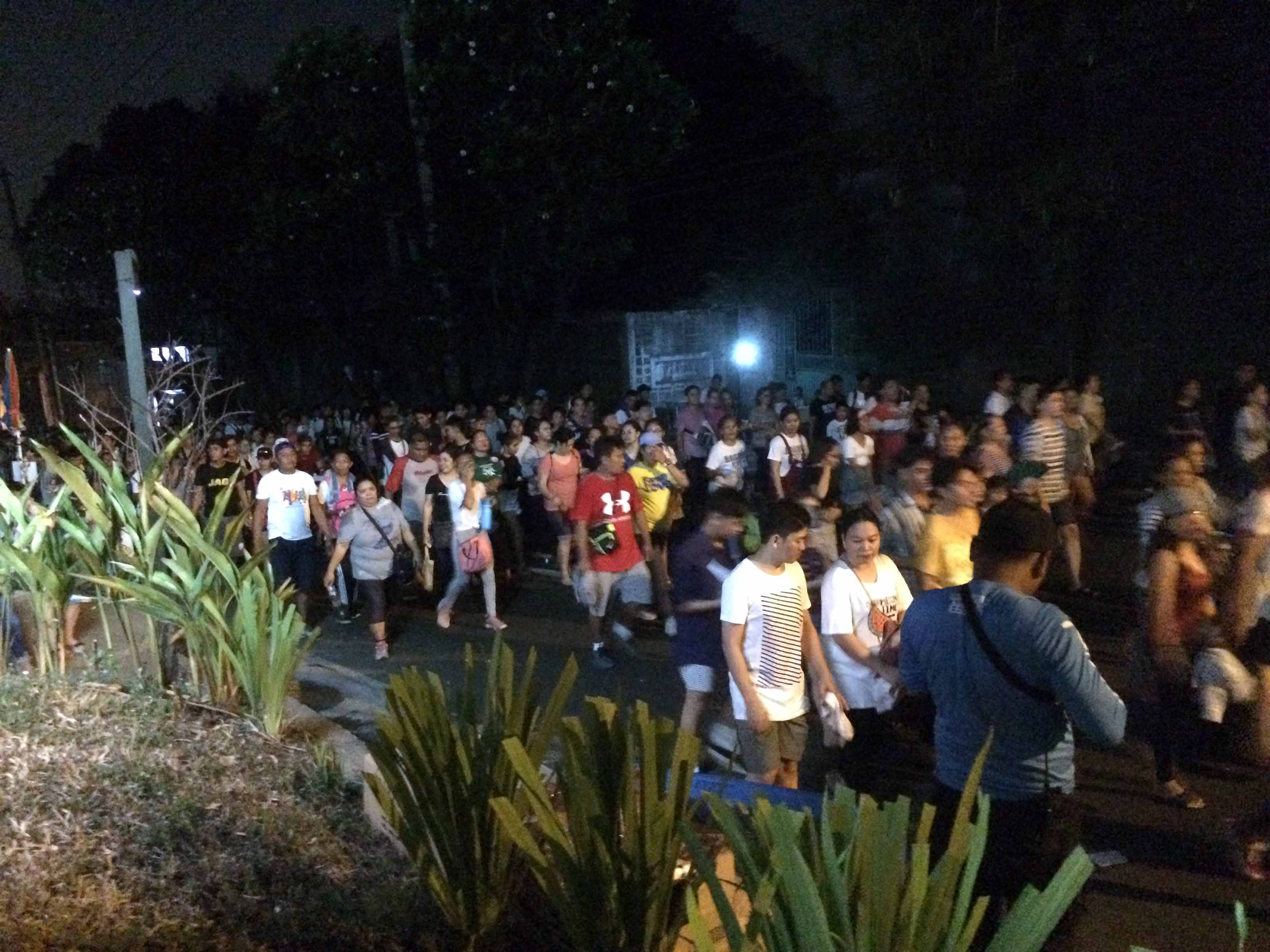

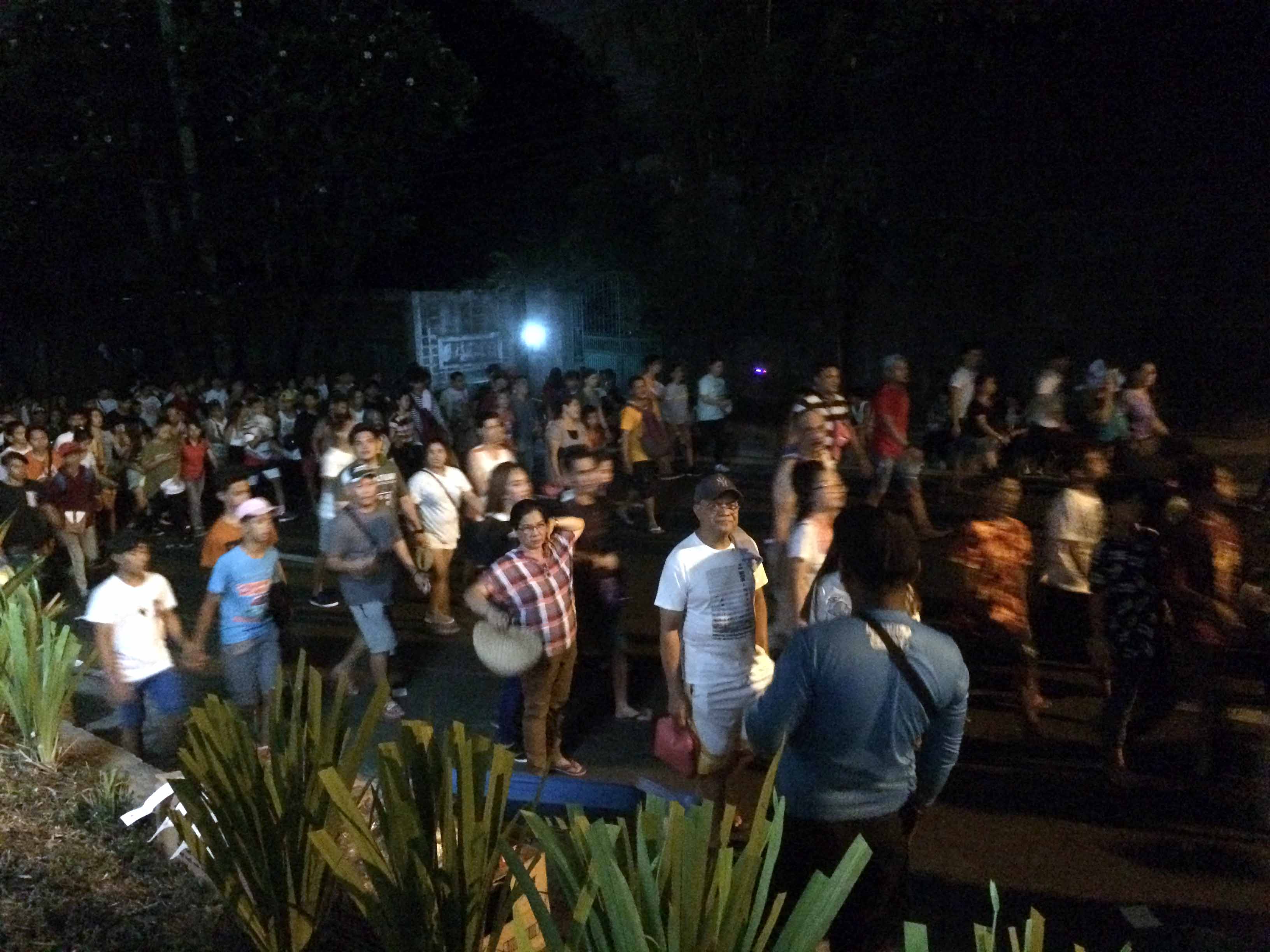
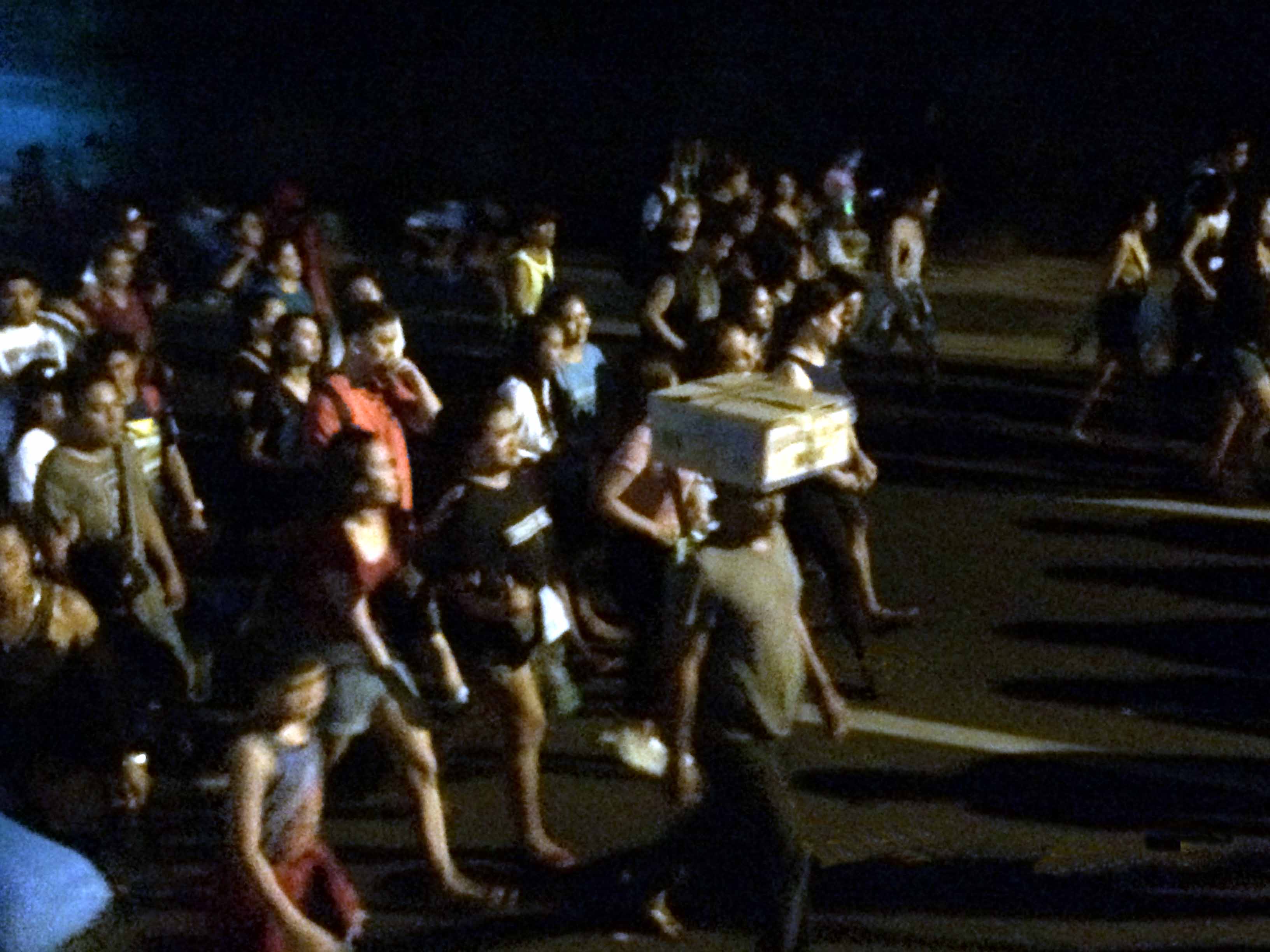

Being associated with safe travel, the Nuestra Senyora de la Paz y Buen Viaje is visited by overseas contract Filipino workers and others leaving for abroad to ask for her blessing and protection. The Antipolo church is also a favorite destination of owners of new vehicles who bring their new acquisitions to be blessed by a priest there.
All photos by the author.
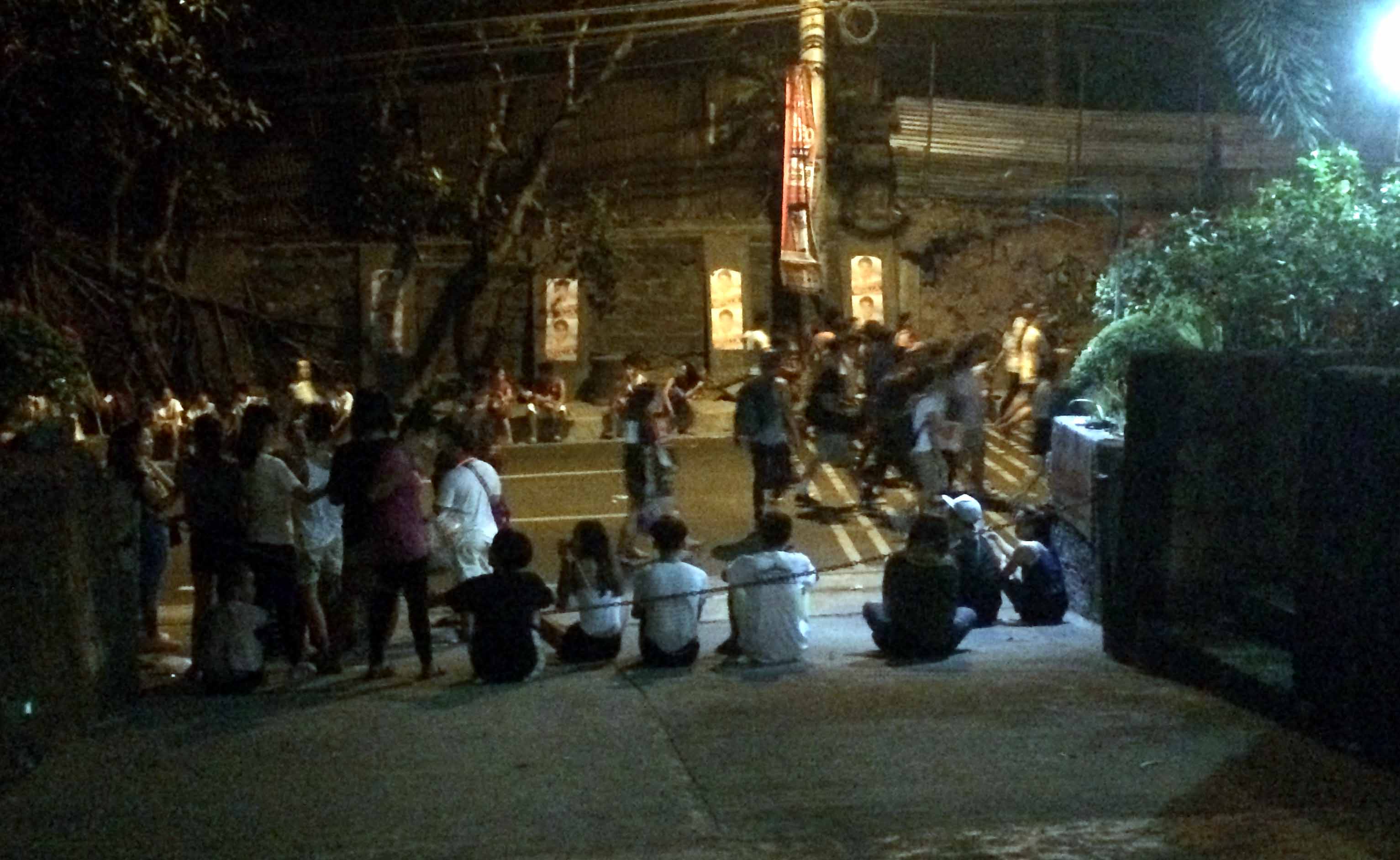

This is very helpful. Thank you! Will surely give proper credits. 🙂